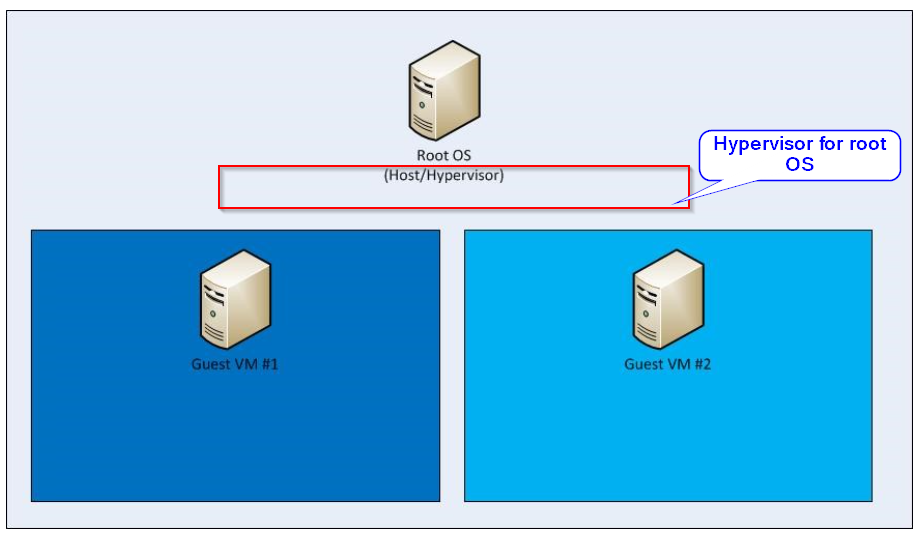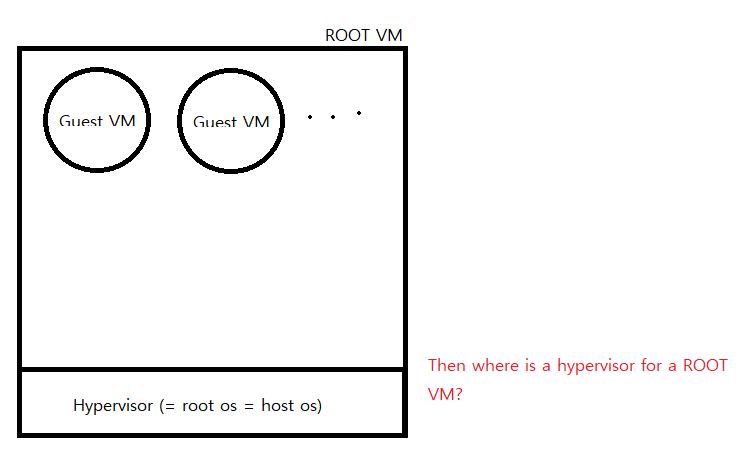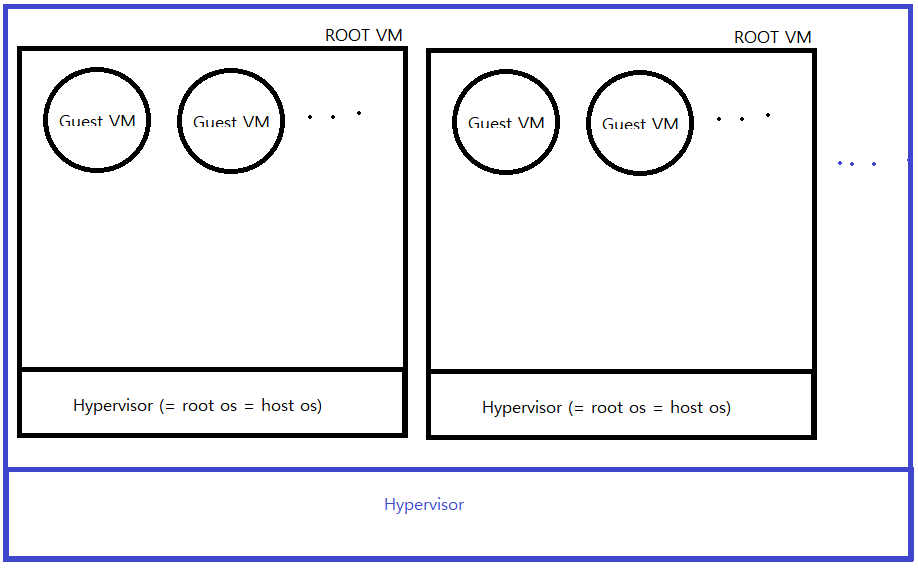Hi @이 호재 ,
Thanks for posting your query on Microsoft QnA. Firstly, apologies for the delay in response.
Your first diagram is correct. The hypervisor is installed on top of the root OS / root VM / host VM for each Node. On top of the hypervisor, we have the individual guest VMs running which are isolated from one another.
I am not sure if I got your question correctly, but we do not need 2 hypervisors for host VM.
The virtualization concept works in such a way that first there is the base OS /host OS/ host VM, on top of which we have the layer of hypervisor that enables virtualization capability for the host VM. Once the layer of hypervisor is installed, we can spin up Guest VMs on top of the hypervisor.
The above-mentioned concept is also described diagrammatically in the document shared by you.

Hope I was able to answer your query. let me know if you have any further questions.
--------------
Please accept as answer and upvote if you think the information provided was useful.

